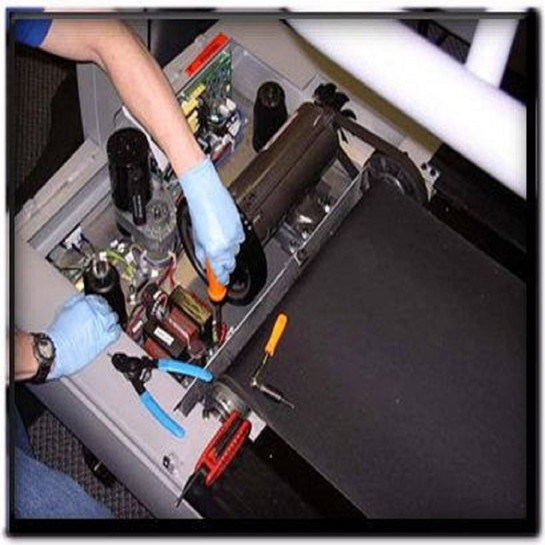My Treadmill Will Not Turn On, Now What?
Overcoming Treadmill Challenges: Getting Your Treadmill to Turn On Again
If you're experiencing difficulties with your treadmill not turning on, there could be several common reasons behind this issue. Understanding these potential causes will help you troubleshoot and resolve the problem efficiently.
One possible reason is a power supply issue. Ensure that your treadmill is properly plugged into a working outlet. Check if there's a tripped circuit breaker or blown fuse that needs to be reset or replaced. Additionally, inspect the power cord for any damage or fraying that may be disrupting the electrical connection.
Another common culprit is the safety key. The safety key acts as a safety measure to shut off the treadmill if it's disconnected. Ensure that the safety key is securely inserted into the designated slot. If it's loose or damaged, you may need to replace it with a new one.
Lastly, a malfunctioning control panel or console can prevent your treadmill from turning on. Inspect the control panel for any visible signs of damage or wear. If necessary, clean the panel to remove any dirt or debris that may be interfering with the buttons or touchscreen functionality. If the control panel is unresponsive or shows error messages, it may require professional repair or replacement.
Troubleshooting steps for a treadmill that won't turn on
If your treadmill refuses to turn on, follow these troubleshooting steps to identify and resolve the issue.
Checking the power source and electrical connections
Start by ensuring that your treadmill is connected to a reliable power source. Check if the power cord is properly inserted into a working outlet. If you're using an extension cord, make sure it's rated for the treadmill's power requirements and isn't damaged or overloaded. Inspect the circuit breaker or fuse box for any tripped breakers or blown fuses, and reset or replace them if necessary.
Resetting the treadmill and checking the safety key
Sometimes, a quick reset can solve the problem. Locate the treadmill's reset switch, usually located near the power cord or motor. Press and hold the switch for a few seconds, then try turning on the treadmill again. Additionally, make sure the safety key is securely inserted into the designated slot. If it's loose or damaged, replace it with a compatible key.
Inspecting the control panel and console
Check the control panel and console for any visible damage or malfunctioning components. Clean the panel using a soft, lint-free cloth to remove any dirt, dust, or debris that may be obstructing the buttons or touchscreen. If the control panel is unresponsive or displays error messages, consult the treadmill's user manual for troubleshooting instructions. In some cases, professional repair or replacement may be necessary.
Testing the motor and motor controller
If the power source, safety key, and control panel are not the cause, the problem may lie with the motor or motor controller. Consult the treadmill's user manual for instructions on how to access and test these components. If you're unfamiliar with the process, it's recommended to contact customer support or a professional technician for assistance. Here is a list of National Service Centers TreadmillPartsZone National Service List They will have the expertise to diagnose and repair motor-related issues.
Preventive maintenance tips to avoid treadmill issues
Regular maintenance can significantly reduce the chances of encountering treadmill issues. Follow these preventive maintenance tips to keep your treadmill in optimal condition:
- Keep the treadmill clean: Regularly dust and wipe down the treadmill's surfaces, including the belt, control panel, and frame. Use a mild detergent and a soft cloth to remove dirt and sweat residue.
- Lubricate the belt: Depending on the manufacturer's recommendations, apply lubricant to the treadmill's belt to reduce friction and ensure smooth operation. Follow the instructions in the user manual for the proper lubrication technique.
- Tighten loose components: Periodically check and tighten any loose bolts, nuts, or screws on the treadmill. This will prevent unnecessary vibrations and ensure stability during use.
- Check the power cord: Inspect the power cord for any damage or fraying. Replace it immediately if you notice any signs of wear to avoid electrical hazards.
- Avoid excessive weight: Be mindful of the maximum weight capacity of your treadmill and avoid exceeding it. Excessive weight can strain the motor and other components, leading to premature failure.
When to consider replacing your treadmill
While troubleshooting and preventive maintenance can resolve many treadmill issues, there may come a time when replacing your treadmill is the best course of action. Consider the following factors when deciding if it's time for a new treadmill:
- Age and usage: If your treadmill is several years old and has undergone extensive use, it may be more cost-effective to invest in a new one rather than repair it repeatedly.
- Irreparable damage: If your treadmill has suffered severe damage that cannot be fixed, such as a motor failure or a cracked frame, it's likely time to replace it.
- Technological advancements: Newer treadmill models often come with enhanced features and technological advancements that may better suit your fitness needs and preferences.
- Safety concerns: If you've encountered persistent safety issues with your treadmill, such as sudden stops or erratic behavior, it's crucial to prioritize your well-being and replace the treadmill with a safer alternative.
- If your treadmill is older and parts needed may not be available.
When considering a new treadmill, research different models, read customer reviews, and consult with fitness professionals to find the best fit for your requirements and budget.
Conclusion
Encountering difficulties with your treadmill not turning on can be frustrating, but by understanding the common reasons behind this issue and following the troubleshooting steps outlined in this article, you can overcome these challenges. Remember to prioritize safety, perform preventive maintenance regularly, and consider replacing your treadmill if necessary. By taking these steps, you'll be able to enjoy a functional and reliable treadmill for years to come.
Now that you have the knowledge and tools to address treadmill issues, don't let a non-responsive treadmill stop you from achieving your fitness goals. Take action and get your treadmill up and running again!
Looking for parts for your treadmill, check out this site TreadmillPartsZone
Click here to browse our wide selection of high-quality treadmills that will help you stay on track with your fitness journey.


